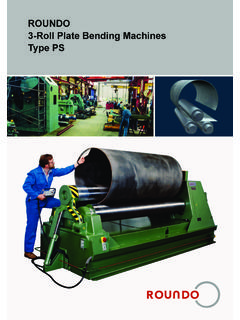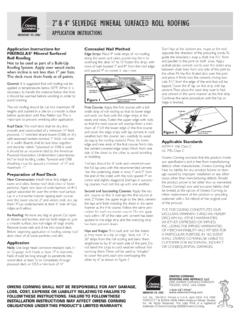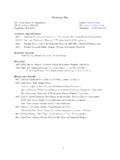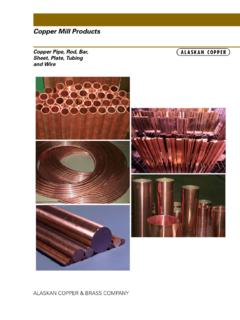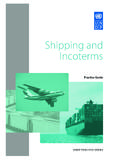Transcription of Effect of taper tension profile on the telescoping in a ...
1 Journal of Mechanical Science and Technology 23 (2009) 3036~3048 Journal of Mechanical Science and Technology Effect of taper tension profile on the telescoping in a winding process of high speed roll to roll printing systems Changwoo Lee1, Hyunkyoo Kang2, Hojoon Kim2 and Keehyun Shin2,* 1 Flexible Display roll to roll Research Center, Konkuk University, 1 Hwayang-Dong, Gwangjin-Gu, Seoul 143-701, Korea 2 Department of Mechanical and Aerospace Engineering, Konkuk University, 1 Hwayang-Dong, Gwangjin-Gu, Seoul 143-701, Korea (Manuscript received February 13, 2009; Revised July 14, 2009; Accepted August 6, 2009) ---------------------------------------- ---------------------------------------- ---------------------------------------- ---------------------------------------- ---------------------------------------- ---------------------------------------- -------- Abstract Winding is an integral operation in almost every roll to roll system.
2 A center-wound roll is one of the suitable and general schemes in a winding mechanism. In general, the quality of wound roll is known to be related to the lateral displacement error and starring defect of a wound roll . Especially, a telescoping within a center-wound roll can cause damages such as misalignment between layers, folding, wrinkle, etc. taper tension is known to be one of the major factors which affect the shape of a wound roll . It is therefore necessary to analyze the relationship between taper ten-sion profile and telescoping within the center-wound roll to prevent winding failure and to sustain high quality of the printed materials. It is hard to compensate for undesirable winding roll shapes such as telescoping , because a winding is commonly a final process in roll to roll systems and has no feedback control mechanism to correct winding roll shape directly during winding operation.
3 Therefore, an optimal taper tension profile and the accurate control of it in a winding section could be one way to shape the fail-safe of a wound roll . Through the correlation between taper tension profile and telescoping in a winding process, a mathematical model for the telescoping due to tension distribution in cross machine direction was developed, and verified by experimental study. A new logic to determine the proper taper ten-sion profile was designed by combining and analyzing the winding mechanism which includes nip induced tension model, relationship between taper tension profile and telescoping , relationship between taper value and telescoping . Numerical simulations and experimental results show that the proposed method is very useful for determining the de-sirable taper tension profile during the winding process and preventing defects of winding roll shape such as telescop-ing.
4 Keywords: Lateral displacement; roll to roll system; taper tension profile ; telescoping ; Winding process; Wound roll ---------------------------------------- ---------------------------------------- ---------------------------------------- ---------------------------------------- ---------------------------------------- ---------------------------------------- -------- 1. Introduction Winding, which is a useful storage method without folding or cutting, is an integral operation and the final process in most roll to roll systems. A winding is the process of turning a flat web into a coil as shown in Fig. 1 [1, 2]. There are three kinds of winding mechanism as shown in Fig. 2. The simplest is the center-wind where the roll is completely supported and driven through its core. The drive, which is usually a speed controlled electric motor, pulls web tension .
5 The cen-ter-wind only has tension to control the hardness of a wound roll , and is one of the most efficient and con-venient processes for a high speed winding process. Another common class of winding is the surface wind. In this winding method, the winding roll is nipped against a roll that is driven. The nip load is usually adjusted by a pneumatic or hydraulic cylinder system. The drive operates on the surface of the winding roll . This paper was recommended for publication in revised form byAssociate Editor Kyung-Soo Kim *Corresponding author. Tel.: +82 2 450 3072, Fax.: +82 2 447 5886 E-mail address: KSME & Springer 2009 C. Lee et al. / Journal of Mechanical Science and Technology 23 (2009) 3036~3048 3037 Fig. 1. Winding process. Fig. 2. Classifications of winder.
6 The wound roll hardness for surface winder is con-trolled by both web tension and nip load. The surface winding method is generally applied to the winding of very light substrate because excessive radial stress could be generated around core which makes defects such as buckling, starring, etc. The last class, the cen-ter-surface winder, can control roll hardness by ad-justing web tension , as do both center and surface winders. The center-surface winder can also control winding hardness by varying the nip force, as does the surface winder. However, there are some difficul-ties in center-surface winding scheme such as syn-chronization of two independent driving motors (sur-face and center winder), high precision control of speed, friction between surface roll and winder [3-6].
7 Winding has a tension profile to control the hard-ness of wound roll in general. The tension is defined as the average machine direction web force per unit of web width. The web may neck, yield or break fre-quently when the tension is too high. If the tension is too low, the web may flop around or lose traction on rollers. In the same way, high radial stresses make the wound roll tight and low radial stresses make the wound roll loose [4-7]. The shape of wound roll can be collapsed in both cases. There are three principles in roll structuring [6]. The first is that the roll must be wound harder at the beginning of winding in order to build a solid foundation. If the roll is too soft to be loose at the core, it may telescope upon unwinding.
8 The second principle is that the web has to be wound softly at the end of winding. If the finish is overly hard or tight, then material might be damaged (star-ring, buckling, etc). Finally, the tightness varies smoothly from the tighter core to the looser finish as the roll builds. If there are abrupt changes in nip force or tension , then the roll may be prone to starring. In general, the hardness of wound roll is a function of tension , nip force and torque. It is, however, not easy to change the nip force in real-time, because a nipping system adjusted by a pneumatic or hydraulic cylinder has a low response time in general. On the other hand, the tension can be easily adjusted by controlling the speed of winding. That is, taper tension usually im-plies a reduction of web tension as a function of cur-rent roll diameter.
9 The most common option of roll structuring is a linear taper tension with respect to current roll diameter. The most common scheme of winder control uses a starting point tension at the core and a slope to decrease winding tension as the roll diameter builds. This slope is usually entered as a percentage called taper [5, 6]. Altmann provided a general solution of a linear elastic roll material while using a nonlinear constitu-tive relation to find the radial and hoop stresses for successive wraps [8]. He solved a second-order dif-ferential equation for linear elastic material in a center wound roll . Altmann had considerable insight into the nondimensionalization of the elastic and geometric parameters so that the derivation did not become un-wieldy.
10 Yagoda established the core compliance as an inner boundary condition on center wound rolls [9]. He developed a hypergeometric series evaluation of the winding integral to correct Altmann s solution near the core and developed his model with the same integral formulation as Altmann. Hakiel incorporated nonlinear material properties into the basic mechanics and derived numerical solutions of wound roll stresses [7]. He was the first to publish a nonlinear solution using finite difference techniques. While previous and simpler winding models were able to reduce much of the solution to closed form expres-sions, the complexities of a nonlinear modulus pre-cluded a predominantly mathematical treatment. Instead, the Hakiel model relies heavily on numerical 3038 C.

